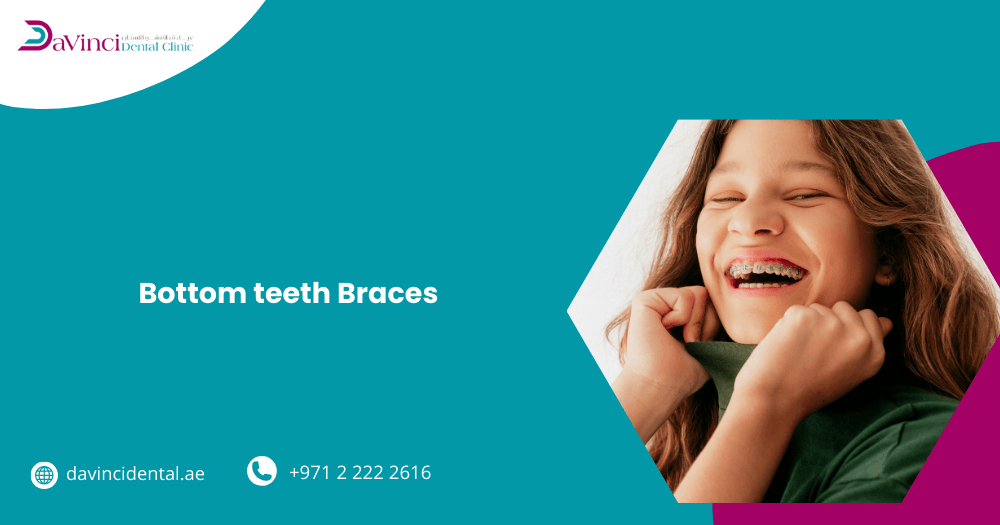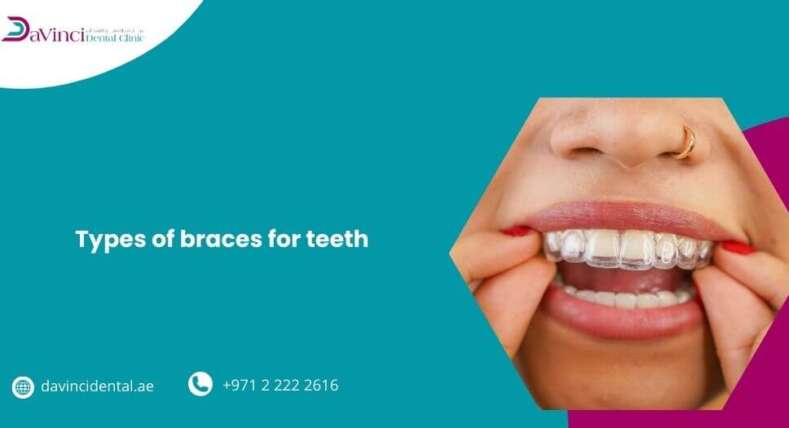Common dental issues like crowded or crooked bottom teeth can have an impact on your overall oral health as well as how your smile looks.
When necessary, braces can be used to treat just the lower teeth, even though many people consider them to be a whole mouth treatment.
Bottom teeth braces are intended to address biting abnormalities, misalignment, and spacing concerns that impact the lower dental arch.
This article will describe what a dental arch is, the various types of braces for bottom teeth, whether you can receive braces for just your bottom teeth, and the main benefits and drawbacks to consider before beginning treatment.
Table of Contents
What is a Dental Arch?
The dental arch is one of your two rows of teeth. Both your top and bottom arches have a probability of misalignment. In order to correct malocclusions and avoid the health problems that uncorrected misalignments can bring, your doctor may recommend braces or Invisalign as treatment alternatives.
A deformed face, respiratory issues, difficulty speaking, biting, and eating, and even dental decay can happen because crowded teeth are harder to clean effectively, causing all these problems.
What are Bottom Teeth Braces?
Bottom teeth braces are braces used for the lower arch only. Single-arch braces are not usually advised because most issues require balancing both arches, which is much easier with a full set of braces.
If you get one row of braces, you’ll most likely end up having an opposite movement on the other arch, creating new problems despite solving the old ones.
For example, if you have an overbite where the top row of teeth juts out too far in front of the bottom, placing braces on the top arch only will increase the space as the teeth straighten, which can cause other issues.
Types of Braces for Bottom Teeth
Can You Get Braces on the Bottom Teeth Only?
Because the bottom teeth are less obvious when you smile, bottom teeth braces are less common than those on the top teeth. However, when speaking, misaligned bottom teeth are obvious. Patients who are thinking about getting braces for their bottom teeth have a range of alternatives to fit their requirements and preferences. Traditional metal braces, ceramic braces, and lingual braces are the three most popular types.
Traditional Braces
The most popular option is still traditional metal braces due to their efficacy and longevity. They work particularly well for cases of severe overcrowding or misalignment in the lower tooth arch. Their silver wires and brackets are the most noticeable alternative, but they are also the least expensive, so many patients find them to be an appropriate choice.
Ceramic Braces
Ceramic braces are made with tooth-colored or transparent brackets that blend in with the teeth to suit people seeking a more discreet option. They provide significant corrective force and function similarly to metal braces, but they are less obvious, which appeals to adults and teenagers who are concerned about aesthetics. However, compared to metal braces, they are usually significantly more sensitive and more costly.
Lingual Braces
Lingual braces, which are positioned beneath the lower teeth and are totally undetectable from the outside, are an additional advanced alternative. They offer efficient alignment, but since they may initially impair speech and irritate the tongue, there is frequently an adjustment period. Additionally, they are often the priciest kind of braces, and this misalignment can be a risk to your oral health.
Patients might need just one arch treatment on the lower dental arch if they have no issues with their upper teeth or if their upper teeth are straight. However, you’ll need to talk to your dentist to see if it’s a good option in your case.
Pros and Cons of Bottom Teeth Braces
Benefits of Braces for the Bottom Teeth:
- Effective correction: They can produce reliable results when correcting misaligned, crowded, or crooked lower teeth.
- Better bite: Helps in correctly aligning the dental arches, which lessens jaw strain and uneven tooth wear.
- Long-term effects: When combined with appropriate retainer usage, treatment produces results that last after it is finished.
- Multiple options available: Patients have a variety of alternatives, including metal, ceramic, and lingual braces, based on their needs and aesthetics.
- Boosts confidence: A straighter smile frequently enhances appearance and self-esteem.
Cons of Braces for the Bottom Teeth:
- Irritation and discomfort: Braces on the lower teeth can initially create discomfort or irritation.
- Aesthetic issues: Some patients may find traditional braces unsightly since they are visible.
- Speech issues: Lingual braces are one option that may momentarily impair speech.
- More expensive choices: The cost of ceramic and lingual braces is higher than that of metal braces.
- Dental hygiene issues: It can be difficult to care for and clean around brackets and wires on the bottom teeth.
Read More: Orthodontic Center in Abu Dhabi.
Conclusion
Your smile and general oral health can be significantly improved by selecting the best course of action for your crowded or crooked lower teeth.
Bottom teeth braces are beneficial for correcting bite, spacing, and misalignment concerns in the lower dental arch.
At Davinci Dental Clinic, customers can choose the braces that best suit their lifestyle, budget, and cosmetic preferences, with options ranging from conventional metal braces to more discreet ceramic and lingual braces.
Read More: transparent teeth braces.
Frequently Asked Questions
Is 25 too late to get braces?
The good news is that, regardless of age, getting braces is never too late. In fact, ignoring orthodontic issues may endanger your dental health.
How long do braces stay on?
That depends on a number of things. For traditional metal braces, the typical course of treatment lasts 12 to 24 months. It could just take a year for someone with a slight overbite and only a few misaligned teeth. Someone with a significant overbite, crossbite, many crooked teeth, or impacted teeth may require treatment every day for 24 months.
Can you eat normally with braces?
Slow down and chew your meal softly because braces can be fragile, and hard chewing could remove a bracket or damage a wire. Hard foods might harm the wires or brackets, so make sure to make your food softer. It's better to bake, steam, or simmer it, you may also chop it into little pieces.





